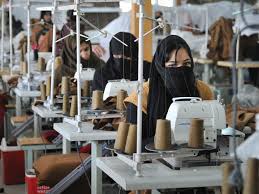Clothing Malfunction: Is Children Dying Really Worth It?

November 14, 2018
Our planet has fallen on hard days for the time being, however thoroughly ignored, global warming… what? Suitable government officials… never heard of it… leaving a responsibility for us commoners to aid our planet by any means necessary.
Through careful Netflix documentary perusing, I have come upon one of the fundamental habits that have turned me into an unintentional Earth-annihilator; convenient merchandise marketing.
Mass product consumerism is a subject that had only ever been discussed through hushed tones in poorly-lit rooms until Netflix’s documentary, “The True Cost” forced product patrons to look past the mirror reflecting their slave-made fashion and view the repercussions for our insatiable desire for more, at the lowest possible price. “It’s sad, because kids deserve the education that we all have in America, that they can’t get if they’re working,” say Pitman student Isabella Rodriguez. A prevalent stigma addressed in the feature is the media regarding clothing products as a disposable resource, that advance with time.
As new trends are carried out, societal conditioning advises the population to dress that way, and discard items that would be considered “out of date.” On account of commodities being manufactured in abundance, it is all too accessible to abandon their perfectly functional apparel because it is so inexpensive to do so. Apparel that will inevitably occupy a landfill for years to come.
Social norms define clothing as an easily replaceable asset, one that is cast off rather than repaired or patched up as the eras progress. The resolution is conceivable, and more transparent than would be assumed: sustainable merchandise.
“If we want to help them, we can buy American-made…” says Caynthra, an office staff member.
The typical American philosophy is quantity over quality, but if consumers would invest in superior-value American-made resources as opposed to cheaply-manufactured slave-made items, waste would be drastically reduced, environmental character would improve, and fewer humans would be trafficked to produce articles that will disappear before the end of the season.
This issue is met with profound ignorance when brought to discourse, and many accept that if we can operate under the illusion that such inhumanities are not being carried out due to our behaviors, that time will just go on, and our doings will result in no penalties.
I disregarded the affair of child slavery no longer, and when I mentioned such to students and staff of Pitman High School, the recountence was met with either general disorientation or abject horror. An uncomplicated recommendation, which could be carried out in our own schools, is to educate our leaders-of-tomorrow, and create strength in numbers.
It is our responsibility has humans to recover our habitat and unchain the poor souls who are catering to our gluttony before they can fight for their own freedom.